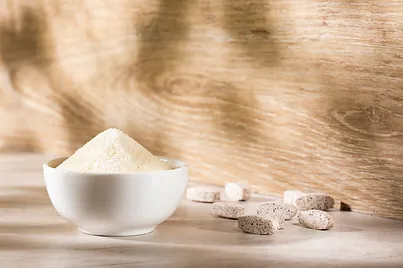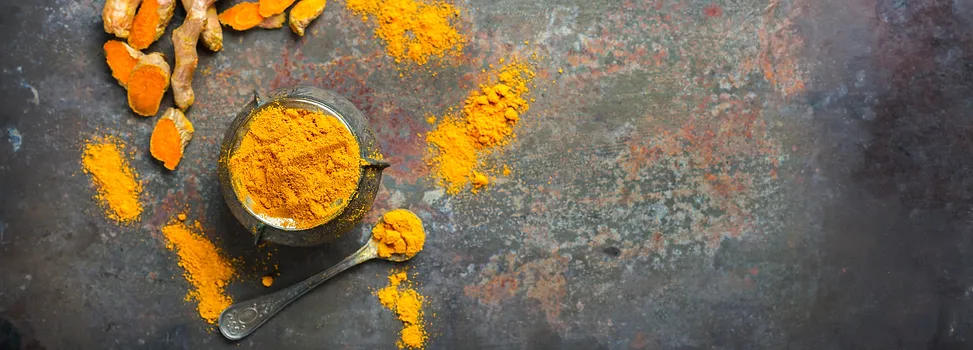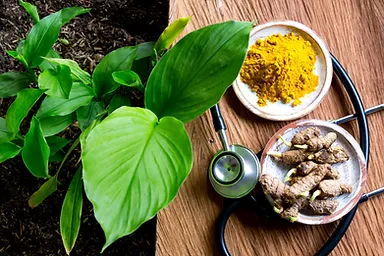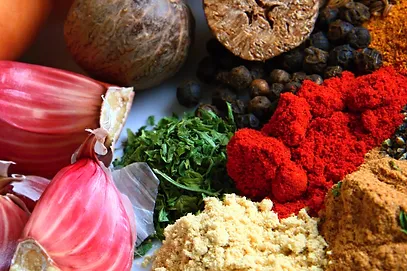Methylsulfonylmethane (MSM)

Until now glucosamine sulfate (GS) has been the most widely used supplement and has been shown to be efficacious in the treatment of osteoarthritis (OA). Methylsulfonylmethane (MSM) and boswellic acids (BA) are new effective supplements for the management of inflammation and joint degeneration, according to previous experimental studies. In this prospective randomized clinical trial, MEBAGA (Methylsulfonylmethane and Boswellic Acids versus Glucosamine sulfate in the treatment of knee Arthritis), 120 participants affected by arthritis of the knee were randomly assigned to an experimental group (MB group) or a control group (GS group) treated for 60 days with 5 g of MSM and 7.2 mg of BA or with 1500 mg of GS daily, respectively. At the 2-month (T1) and 6-months (T2) follow-up, the efficacy of these two nutraceuticals was assessed using the visual analog pain scale (VAS) and the Lequesne Index (LI) for joint function, along with the use of anti-inflammatory drugs (non-steroidal anti-inflammatory drugs and anti-cyclooxygenase-2). The repeated measures ANOVA analysis shows that for VAS, LI, and the use of anti-inflammatory drugs scores there are improvements due to the time in the two groups (respectively, F=26.0; P<0.0001; F=4.15; P=0.02; F=3.38; P=0.04), with a tendency to better values for the MB group at T2.On the basis of these preliminary data, we could support the efficacy of the MSM in association with BA in the treatment of OA. These results are consistent with the anti-inflammatory and chondroprotective effects previously occurred in experimental studies. This new combination of integration (MSM and BS) has presented good results and satisfactory in comparison with GS, until now the cornerstone of the treatment of arthritis in according to guidelines.
Efficacy of methylsulfonylmethane (MSM) in osteoarthritis pain of the knee: a pilot clinical trial
Osteoarthritis (OA) is the most common form of arthritis and the second most common cause of long-term disability among middle-aged and older adults in the United States. Methylsulfonylmethane (MSM) is a popular dietary supplement used as a single agent and in combination with other nutrients, and purported to be beneficial for arthritis.
A randomized, double-blind, placebo-controlled trial was conducted. Fifty men and women, 40-76 years of age with knee OA pain were enrolled in an outpatient medical center. Intervention was MSM 3g or placebo twice a day for 12 weeks (6g/day total). Outcomes included the Western Ontario and McMaster University Osteoarthritis Index visual analogue scale (WOMAC), patient and physician global assessments (disease status, response to therapy), and SF-36 (overall health-related quality of life).

Compared to placebo, MSM produced significant decreases in WOMAC pain and physical function impairment (P<0.05). No notable changes were found in WOMAC stiffness and aggregated total symptoms scores. MSM also produced improvement in performing activities of daily living when compared to placebo on the SF-36 evaluation (P<0.05).
MSM (3g twice a day) improved symptoms of pain and physical function during the short intervention without major adverse events. The benefits and safety of MSM in managing OA and long-term use cannot be confirmed from this pilot trial, but its potential clinical application is examined. Underlying mechanisms of action and need for further investigation of MSM are discussed.
Turmeric

Efficacy and Safety of Turmeric Extracts for the Treatment of Knee Osteoarthritis: a Systematic Review and Meta-analysis of Randomised Controlled Trials
Sixteen RCTs of up to 16 weeks duration including 1810 adults with knee OA were included. Eleven RCTs compared the efficacy of turmeric extracts with placebo and five with active comparators (NSAIDs). Turmeric extracts significantly reduced knee pain (SMD – 0.82, 95% CI – 1.17 to – 0.47, I2 = 86.23%) and improved physical function (SMD – 0.75, 95% CI – 1.18 to – 0.33, I2 = 90.05%) compared to placebo but had similar effects compared to NSAIDs. Turmeric extracts had 12% fewer adverse events than NSAIDs and similar rates to placebo. Turmeric extract is a safe and effective option for the symptomatic management of knee OA, compared to placebo or NSAIDs.
Turmeric extract, black pepper, and ginger versus Naproxen for chronic knee osteoarthritis: A randomized, double-blind, controlled clinical trial
To determine the effect of cosupplementation with turmeric extract, black pepper, and ginger on prostaglandin E2 (PGE2 ) in patients with chronic knee osteoarthritis, compared with Naproxen, sixty patients with two different levels of knee osteoarthritis (Grade 2 and 3) were studied. Individuals were randomly assigned to receive daily turmeric extract, ginger, and black pepper together or Naproxen capsule for 4 weeks. PGE2 ( a marker of inflammation) was evaluated by ELISA method. 24-hr recall was also assessed. All of participants completed the study. PGE2 decreased significantly in both groups (p < .001), but there was no significant differences between groups. The results of this study indicated that intake of the selected herbs twice a day for 4 weeks may improve the PGE2 levels in patients with chronic knee osteoarthritis similar to prescription Naproxen drug, an NSAID with a comparatively higher risk of negative side effects .

Bioavailable turmeric extract for knee osteoarthritis: a randomized, non-inferiority trial versus paracetamol
Seventy-one and seventy-three knee OA patients, respectively in bioavailable turmeric extract and paracetamol (also known as acetaminophen) groups, completed the study. Non-inferiority (equivalence) test showed that WOMAC scores were equivalent in both the groups (p value < 0.05) in all the domains within the equivalence limit defined by effect size (Cohen’s d) of 0.5 whereas CRP and TNF-α were better reduced with turmeric extract than paracetamol. After 6 weeks of treatment, WOMAC total score, pain, stiffness, and function scores got a significant improvement of 23.59, 32.09, 28.5, and 20.25% respectively with turmeric extract. In the turmeric extract group, 18% of patients got more than 50% improvement and 3% of patients got more than 70% improvement in WOMAC pain and function/stiffness score and none of the patients in the paracetamol group met the criteria. CRP and TNF-α got significantly reduced (37.21 and 74.81% respectively) in the turmeric extract group. Adverse events reported were mild and comparatively less in the turmeric extract group (5.48%) than in the paracetamol group (12.68%).
Conclusion: The results of the study suggest that bioavailable turmeric extract is as effective as paracetamol in reducing pain and other symptoms of knee osteoarthritis and found to be safe and more effective in reducing CRP and TNF-α (inflammatory markers).
Efficacy of Turmeric Extracts and Curcumin for Alleviating the Symptoms of Joint Arthritis: A Systematic Review and Meta-Analysis of Randomized Clinical Trials
We systemically evaluated all RCTs of turmeric extracts and curcumin for treating arthritis symptoms to elucidate the efficacy of curcuma for alleviating the symptoms of arthritis. 29 articles were found and 8 met the inclusion criteria. 3 reported statistically significant reductions in pain, measuring PVAS, compared with placebo. 4 showed statistically significant reductions in pain, via Womac Scores when Turmeric was used.
In conclusion, these RCTs provide scientific evidence that supports the efficacy of turmeric extract (about 1000 mg/day of curcumin) in the treatment of arthritis. However, the total number of RCTs included in the analysis, the total sample size, and the methodological quality of the primary studies were not sufficient to draw definitive conclusions. Thus, more rigorous and larger studies are needed to confirm the therapeutic efficacy of turmeric for arthritis.
Bromelain

Improved WOMAC score following 16-week treatment with bromelain for knee osteoarthritis
Treatment with bromelain-containing enzyme preparation for 3-4 weeks is effective for treatment of knee osteoarthritis (OA). Here, we aimed to assess 16-week treatment with bromelain in mild-to-moderate knee OA patients. We performed a randomized, single-blind, active-controlled pilot study. Forty knee OA patients were randomized to receive oral bromelain (500 mg/day) or diclofenac (100 mg/day).At week 4, the improvement of total WOMAC and pain subscales from baseline was observed in both groups; however, two patients given diclofenac had adverse effects leading to discontinuation of diclofenac. At week 16 of bromelain treatment, the patients had improved total WOMAC scores (12.2 versus 25.5), pain subscales (2.4 versus 5.6), stiffness subscales (0.8 versus 2.0), and function subscales (9.1 versus 17.9), and physical component of SF-36 (73.3 versus 65.4) as compared with baseline values.
Improved WOMAC score following 16-week treatment with bromelain for knee osteoarthritis
Treatment with bromelain-containing enzyme preparation for 3-4 weeks is effective for treatment of knee osteoarthritis (OA). Here, we aimed to assess 16-week treatment with bromelain in mild-to-moderate knee OA patients. We performed a randomized, single-blind, active-controlled pilot study. Forty knee OA patients were randomized to receive oral bromelain (500 mg/day) or diclofenac (100 mg/day). At week 4, the improvement of total WOMAC and pain subscales from baseline was observed in both groups; however, two patients given diclofenac had adverse effects leading to discontinuation of diclofenac. At week 16 of bromelain treatment, the patients had improved total WOMAC scores (12.2 versus 25.5), pain subscales (2.4 versus 5.6), stiffness subscales (0.8 versus 2.0), and function subscales (9.1 versus 17.9), and physical component of SF-36 (73.3 versus 65.4) as compared with baseline values.
Benefits of a Food Supplement Containing Boswellia serrata and Bromelain for Improving the Quality of Life in Patients with Osteoarthritis: A Pilot Study
Forty-nine patients, 6 men and 43 women, aged between 23 and 92 years, (mean age 63.24) participated in the study. At follow-up (3.0 ± 0.7 months), a significant improvement was observed for 7 of 10 QoL questions and, overall, for the total QoL score. The most significant improvements were observed in the joints that were more strongly affected at baseline. A similar trend was observed when separately considering patients with knee, hip, or generalized OA. No patients experienced adverse events and no drug interactions were reported.

Conclusions: From this pilot study, it emerges that the use of the gastroresistant formulation containing the combination of Boswellia and bromelain supplements can represent a valuable nonpharmacological tool for improving the QoL of patients suffering from different forms of OA.
Quercetin
Study on the effect and mechanism of quercetin in treating gout arthritis
Quercetin is widely found in natural plants, especially Chinese herbal plants. It has been used to treat arthritis in China for thousands of years. However, the effects and mechanisms of quercetin in the treatment of gout arthritis (GA) remain unclear. We aimed to verify the treatment of GA with quercetin and investigate the underlying mechanism. A combination of network pharmacology and experiments was used to reveal the mechanism of quercetin in the treatment of GA. Potential targets of quercetin and gout were identified. In an experimental validation, quercetin attenuated ankle joint inflammation-induced bone destruction and histological lesions. It also diminished the expression of IL-6, IL-17A, and IL-17F in the IL-17 pathway, and regulated the release of RAR-related orphan receptor gamma t,IL-17E, IL-1β, IL-6, TNF-α, Foxp3, and transforming growth factor-beta 1. The collective findings implicate quercetin as a valuable alternative drug for the treatment of GA.

Potential Implications of Quercetin in Autoimmune Diseases
Autoimmune diseases are a worldwide health problem with growing rates of morbidity, and are characterized by breakdown and dysregulation of the immune system. Although their etiology and pathogenesis remain unclear, the application of dietary supplements is gradually increasing in patients with autoimmune diseases, mainly due to their positive effects, relatively safety, and low cost. Quercetin is a natural flavonoid that is widely present in fruits, herbs, and vegetables. It has been shown to have a wide range of beneficial effects and biological activities, including anti-inflammation, anti-oxidation, and neuroprotection. In several recent studies quercetin has reportedly attenuated rheumatoid arthritis, inflammatory bowel disease, multiple sclerosis, and systemic lupus erythematosus in humans or animal models. This review summarizes the evidence for the pharmacological application of quercetin for autoimmune diseases, which supports the view that quercetin may be useful for their prevention and treatment.
The antioxidants curcumin and quercetin inhibit inflammatory processes associated with arthritis
Curcumin (Turmeric) and Quercetin are antioxidant molecules with anti-proliferative, anti-inflammatory and immunosuppressive activities. The objective of this study was to investigate the inhibitory activity of these agents using four assays of inflammatory aspects of arthritis.
Methods: Crystal-induced neutrophil activation was measured by luminol-dependent chemiluminescence. Synoviocyte proliferation was measured by an MTS assay using HIG-82 rabbit synoviocytes in cell culture. Chondrocyte (cultured primary cells) expression of the matrix metalloproteinases collagenase and stromelysin was measured by Northern Blot analysis. Angiogenesis was measured using the chorioallantoic membrane of the chick embryo.
Results: Both agents inhibited neutrophil activation, synoviocyte proliferation and angiogenesis. Curcumin strongly inhibited collagenase and stromelysin expression at micromolar concentrations whereas quercetin had no effect in this assay.
Conclusion: These studies suggest that curcumin (Turmeric) and to a lesser extent quercetin may offer therapeutic potential for the treatment of crystal-induced arthritis or rheumatoid arthritis.

(Indian Frankincense Gum Resin Powder) Effectiveness of Boswellia and Boswellia extract for osteoarthritis patients: a systematic review and meta-analysis
Background: Osteoarthritis (OA) is the commonest form of inflammatory joint disease. Unfortunately, to date, there is no appropriate treatment for OA. Boswellia serrata was considered as a potent anti-inflammatory, anti-arthritic and analgesic agent that may be a drug for OA.
Methods: In this meta-analysis, data from randomized controlled trials were obtained to assess the effects of Boswellia or its extract versus placebo or western medicine in patients with OA. The primary outcomes included visual analogue score (VAS), WOMAC pain, WOMAC stiffness, WOMAC function and lequesne index.
Result: Seven trials involving 545 patients were included. Compared with the control group, Boswellia and its extract were shown to relieve pain, stiffness, and improve the joint’s function.
Conclusion: Based on current evidence, Boswellia and its extract may be an effective and safe treatment option for patient with OA, and the recommended duration of treatment with Boswellia and its extract is at least 4 weeks.
Efficacy and tolerability of Boswellia serrata extract in treatment of osteoarthritis of knee–a randomized double blind placebo controlled trial
Osteoarthritis is a common, chronic, progressive, skeletal, degenerative disorder, which commonly affects the knee joint. Boswellia serrata tree is commonly found in India. The therapeutic value of its gum (guggulu) has been known. It posses good anti-inflammatory, anti-arthritic and analgesic activity. A randomized double blind placebo controlled crossover study was conducted to assess the efficacy, safety and tolerability of Boswellia serrata Extract (BSE) in 30 patients of osteoarthritis of knee, 15 each receiving active drug or placebo for eight weeks. After the first intervention, washout was given and then the groups were crossed over to receive the opposite intervention for eight weeks. All patients receiving drug treatment reported decrease in knee pain, increased knee flexion and increased walking distance. The frequency of swelling in the knee joint was decreased. Radiologically there was no change. The observed differences between drug treated and placebo being statistically significant, are clinically relevant. BSE was well tolerated by the subjects except for minor gastrointestinal ADRs. BSE is recommended in the patients of osteoarthritis of the knee with possible therapeutic use in other arthritis.

BioPerine®
BioPerine® Black Pepper Extract – A Natural Bioavailability Enhancer
Black pepper extract (BioPerine®) is a standardized extract, prepared from the dried fruits of Piper nigrum(black pepper) and contains a minimum of 95% Piperine. It is clinically studied for its ability to enhance the bioavailability of the nutrients. It has been well recognized as a bioavailability enhancer for nearly two decades, and it is the only source of black pepper to have undergone clinical studies in the United States and several other countries, which substantiate its safety and efficacy for nutritional use.
Traditional knowledge with modern benefits
The spicy or “hot” taste of pepper when sprinkled on food is well known. The perception of heat is stronger when fresh pepper is used. This heat is in fact a manifestation of the biological activity of some of the active compounds found in pepper, the most notable of these being piperine.
Black pepper is considered the “King of Spices” throughout the world due to its pungent principle piperine.
BioPerine® is a patented extract obtained from black pepper fruits (Piper nigrum) standardized minimum to 95% Piperine.
BioPerine® has been used as a bioavailability enhancer for over 20 years.
BioPerine® may be co-administered with various nutrients to enhance their bioavailability in both human and animal.
In general, BioPerine® was found to enhance absorption of nutrients by at least 30%.
Black pepper is one of the spices which has been used for ages to flavor various cuisines throughout the globe. It is especially known for its pungent flavor and thermogenic activity. The black pepper has been used traditional medicines as an adjuvant to support knee pain, abdominal discomfort, to enhance mood, tiredness, manage a healthy weight, etc (Heerasing et al., 2019). Subsequently, piperine is no more just a spice, but is being considered as a food supplement, thermonutrient and as a natural bioavailability enhancer. Out of many pharmacological benefits of the black pepper extract, its bioavailability enhancing ability is widely accepted.
